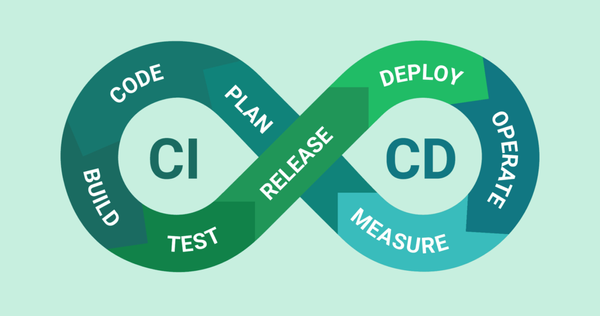In the realm of software development, two acronyms have become particularly significant in recent years: CI and CD. Short for Continuous Integration and Continuous Delivery (or Deployment), these practices have revolutionized the way software is developed, tested, and delivered. But what exactly are CI and CD, and why are they so important? In this article, we’ll explore the concepts, benefits, and implementation of CI/CD, and understand how they contribute to more efficient and reliable software development processes.
Understanding CI/CD: Definitions and Concepts
Continuous Integration (CI)
Continuous Integration is a development practice where developers frequently integrate their code changes into a shared repository, often multiple times a day. Each integration is then automatically verified by a build and automated tests to detect integration errors as quickly as possible. The key components of CI include:
- Frequent Code Commits: Developers commit their code changes frequently, ideally several times a day.
- Automated Builds: Each commit triggers an automated build process, ensuring that the codebase is always in a buildable state.
- Automated Testing: Automated tests run on every build to catch bugs and issues early in the development cycle.
Continuous Delivery (CD)
Continuous Delivery builds on the principles of CI, extending them to automate the release process. With CD, code changes are automatically prepared for a release to production. This means that every change that passes the automated tests can be deployed to production at any time. The main aspects of CD include:
- Automated Deployment: The deployment process is automated to ensure that releases can be made quickly and reliably.
- Release Readiness: Code is always in a deployable state, with rigorous automated testing and quality checks.
- Frequent Releases: Teams can release updates to production more frequently, ensuring that new features, improvements, and bug fixes reach users faster.
Continuous Deployment
While Continuous Delivery ensures that code is always ready to be deployed, Continuous Deployment takes it a step further. In Continuous Deployment, every change that passes the automated tests is automatically deployed to production, eliminating the need for manual approval. This practice requires a high level of confidence in the automated testing and deployment processes.
Benefits of CI/CD
Adopting CI/CD brings numerous advantages to software development teams and organizations:
- Faster Time to Market: CI/CD allows for more frequent releases, enabling teams to deliver new features, improvements, and bug fixes to users quickly.
- Improved Code Quality: Automated tests run on every integration, catching bugs early and ensuring a higher quality codebase.
- Reduced Manual Effort: Automation reduces the manual effort required for building, testing, and deploying code, freeing up developers to focus on writing code and solving problems.
- Better Collaboration: CI/CD fosters better collaboration among team members by encouraging frequent integrations and communication.
- Increased Reliability: Automated deployment processes reduce the risk of human error, leading to more reliable releases.
Implementing CI/CD: Key Steps and Best Practices
- Set Up Version Control: Use a version control system (VCS) like Git to manage your codebase. Ensure that all developers commit their changes frequently to a shared repository.
- Automate the Build Process: Use a CI server like Jenkins, Travis CI, or CircleCI to automate the build process. Every commit should trigger a new build.
- Write Automated Tests: Develop a comprehensive suite of automated tests, including unit tests, integration tests, and end-to-end tests. Ensure these tests run on every build.
- Automate Deployments: Use tools like Docker, Kubernetes, or AWS CodePipeline to automate the deployment process. Ensure that your deployment pipeline includes automated quality checks and rollbacks.
- Monitor and Measure: Implement monitoring and logging to keep track of your applications in production. Use metrics to measure the performance and reliability of your CI/CD pipeline and make continuous improvements.
Challenges and Considerations
While CI/CD offers significant benefits, its implementation can present challenges:
- Cultural Change: Adopting CI/CD requires a shift in mindset and culture, with an emphasis on collaboration, automation, and continuous improvement.
- Tooling and Infrastructure: Setting up and maintaining the necessary tools and infrastructure for CI/CD can be complex and resource-intensive.
- Automated Testing Coverage: Developing a comprehensive suite of automated tests is essential but can be time-consuming and challenging to maintain.
- Security: Ensuring security in a fast-paced CI/CD environment requires integrating security practices into the pipeline, often referred to as DevSecOps.
Conclusion
CI/CD represents a significant advancement in software development practices, enabling teams to deliver high-quality software faster and more reliably. By automating the integration, testing, and deployment processes, CI/CD minimizes errors, enhances collaboration, and ensures that code is always in a deployable state. While the journey to implement CI/CD can be challenging, the benefits it brings make it a worthwhile investment for any organization aiming to stay competitive in today’s fast-paced technology landscape. Embracing CI/CD not only improves the development workflow but also leads to better software and happier customers.







